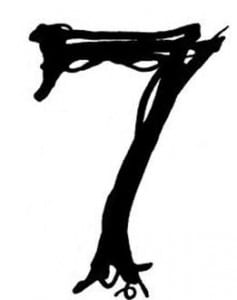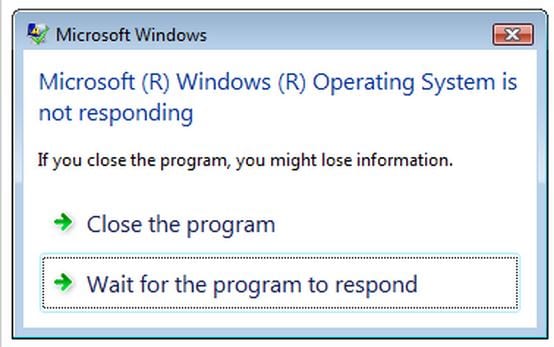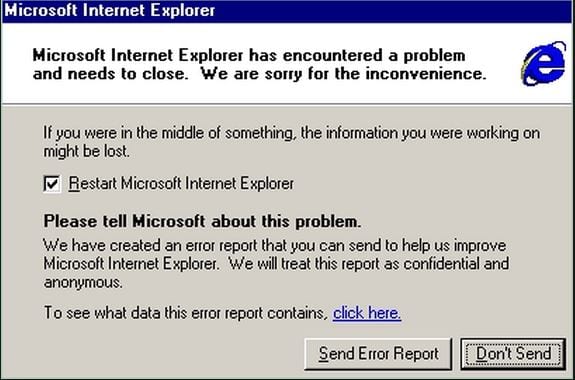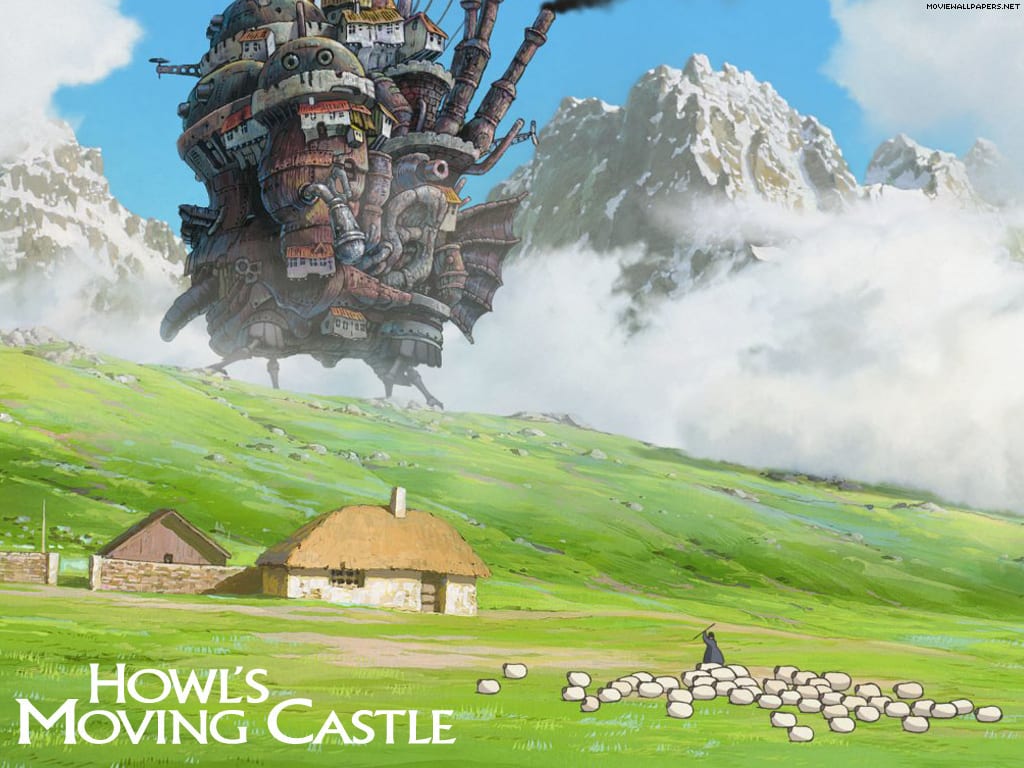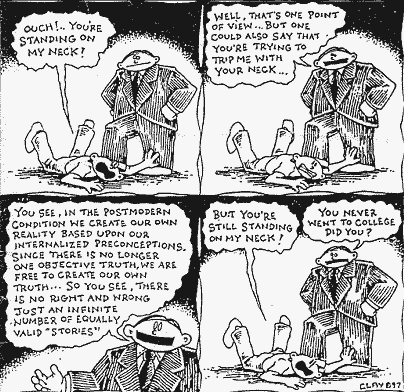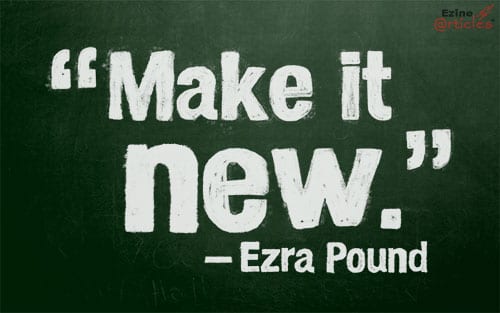Septet is seven poems of seven lines, each with seven syllables. Today is 31st October. Hail All Hallows Eve – let the shadows through…
Category: PhD
Writing as emancipatory practice in Radical Research (John and Jill Schostak)
The word radical is not one I use often. I’m not political or revolutionary and don’t think of myself as activist. I like to work behind the scenes – preferably behind a screen. I’m a critically reflective practitioner, using action research to explore my course Teaching and Learning in a Digital Age and don’t much like speaking in public. Radical was not how I saw myself. Until I found Radical Research by Jill and John Shostak (2008). The book presents ‘radical’ as a mirror where I can see everything I do reflected; raising awareness of digital inclusion, developing online communities of support, exploring how critical reflective practice can emerge from virtual communities and spaces.
Radical Research is bringing together the different elements of my travels in philosophical places. More notes are over on the PhD page. For a book which only mentions postmodernism once, it contains multiple ways of seeing and a respect for alternative world-views which could easily be described as postmodernistic. For example, fragmentation of the social order, reconfiguration of forms of expression and an emphasis on language. ‘Just as the multitude overflows the boundaries of power so language slips from its bonds with content and opens up the possibilities for reconfiguring the visible, the audible, the real according to desires, interests, needs.’ p 10 Data is not given as fixed but is open to configuration and, thus, alternative ways of seeing while ‘…language itself provides the means for the destabilisation necessary for a reframing that includes the excluded.’ P 11
Radical research includes in its designs the means through which voices can be heard. It can do this through the reflective process of action research and collection of narrative which includes voices which have been silenced. ‘Writing difference into the ways in which the world becomes meaningful is itself a radical act.’ P12 As a writer with interest in slippages between the sign and its signification, I liked the book’s emphasis on the power of writing within the research process. This is an area I don’t think is sufficiently addressed. Like the prerequisite digital literacies for engagement with virtual learning environments, there’s an unspoken assumption all postgraduates can write and critically reflect through their writing. ‘Radical research is itself a writing project at every stage. With every interpretation of what the research ‘really means’, a new writing of it emerges. Through the process of writing, the radical becomes embedded in ways of seeing and acting.’ P12.
Chapter 10 W/ri(gh)ting fashions contains much which would not look out of place in a postmodernist text for example the ‘…parading of positions over the truth of a text invokes a catwalk of intellectual, cultural, social, political fashions. Each calls to an audience: look at me; take notice; my interpretation is right. But where in all this is the writer’s intention?’ P 244 Derrida appears in this chapter, Barthes is present elsewhere but there is no sign of Foucault in spite of the book’s attention to power structures, bodies and (Ill)legitimate knowledge(s). Deleuze, Negri and McCluhan make an appearance but Marx, is absent. I can’t position this book – as befits a postmodernist text. Maybe I haven’t read widely enough but I recognise much in these chapters which bring together the disparate range of books and papers I’ve worked through this year. If radical research is about writing as an emancipatory practice, and the making cases for the inclusion of difference, it looks like I may be more radical than I realised.
Still not fluent with the ontological (and others) but hopefully gaining ground
The phd is taking shape. The biggest challenge is time. Progress is slow because of the vastness of the project versus scarcity of hours. Each week I give up sleep and half my weekend. At the CERD Awayday 60 hour weeks were reported and accepted as normal. It shouldn’t be but it is. You can’t support, develop, meet, teach and commute without overspill. thankfully, doing a PhD is beneficial. I’m good at positive thinking and I love words but suspect if there were more time to immerse myself in texts I’d progress faster.
I’m still not fluent with matters ontological and epistemological. I don’t feel comfortable with the jargon. What I feel/believe to be true (ontology?) and my understanding of the nature of knowledge (epistemology?) is developing but I haven’t read enough. I don’t know what is enough. There’s been some progress though. I’ve positioned myself in the post-modern with regard to O and E. From this side, the dark side for the positivists, meaning is both contextual and contested. The inside interests me. Personhood is both external and internal facing. Grant me the serenity to know the difference between what I can and can’t change – and all that. I value experiential learning as the ground for scaffolding knowledge construction and see the process of critical reflection is the catalyst. Adopting an essentialist objectivist standpoint wouldn’t work for me.
One valuable aspects of doctoral research is the opportunity to position yourself; locate your ‘being-in-the-world’. It’s a bit like DIY psychoanalysis. Or the messages on the Brayford Pool Bridge. Where have you been. Where are you going. The answers are more complex than you might think. I’m interested in the digital identity. How online text – anything from a tweet to a tome – is interpreted by the reader. Barthes message in The Author is Dead, reinvented as reader-reception theory by Stuart Hall, offer useful starting points for considering the ‘presentation of self’ online. Virtual reality is the ultimate replication of the real; the simulation. The internet epitomises the postmodern condition.
Regarding ‘being’ I’m still not entirely sure where I am. Which could be expected from someone dabbling in postmodernism. Identity contains multiple contradictions. Is open ended and unfinished. We’re all products of our background and location with little certainty about what lies ahead. Berger and Luckman write about social reality hanging on a thread which can be cut. Most people have experience of thread cutting. I think this is what open ended-ness refers to. We can’t write the future. Or rewrite the past. We are what we are. Postmodernist theory is an attempt to capture the late 20th century human in an age of the machine and information overload.
Mike says I need to look at the slippage from modern to postmodern. Take care not to characterise them as all of one and none of the other. This is useful advice. Marshall Berman in All That Is Solid Melts Into Air insists the world remains a modern one; ‘We might even say that to be fully modern is be anti-modern’ (1981: 14). Anti-modern or post-modern, I need take ownership of my social reality.
Terrible tangents or interesting times ahead?
What’s an ammonite got to do with it? I’m thinking about my pilot phd interviews and wondering about the process. As a research activity, my PhD offers the chance to explore the interview in more depth. I’m adopting a postmodern standpoint which challenges traditional ways of working. Opens up alternative possibilities. Nothing is fixed in postmodernism. I need to think spirals not squares. I don’t do numbers very well but I know the ammonite is formed in a Fibonacci spiral. As the developer of Walking the Labyrinth circular thinking suits me. My mind is an unfinished map full of links and connections. If I’m researching my practice in teaching online, maybe I should be researching the practice of interviews online too.
The word interview comes from early 16th century French entrevue, from s’entrevoir ‘see each other’, from voir ‘to see’, on the pattern of vue ‘a view’ http://oxforddictionaries.com/definition/english/interview Their face to face nature is implicit but this is the digital age as well as a postmodernetic one. What’s interesting is I’ve been here before.
In theory, a truly postmodernist researcher would probably talk themselves out of existence but I find the mental gymnastics useful. The bricolage of postmodern ideas matches the eclectic nature of my thinking. Linkages keep appearing. In the way Teaching and Learning in a Digital Age brings together my work on open education and digital inclusion so the phd is bringing together a decade of teaching ICT in adult and community education with widening participation and my first Masters degree. In 1999 I used the internet – via a dial-up modem, dot matrix printer and 5 and quarter inch floppy disk – to collect first person narratives for my MA dissertation. I didn’t know anyone else doing this at the time. It generated in depth responses from people across the world. It also created ready made transcripts in digital format ideal for analysis; when studying part-time the pragmatics become significant.
I want to get personal. I’m interested in attitudes to technology for education. Like it or not, virtual learning is the future and I want to find out how to do it better. Explore the relationships between individuals and their machines. It may have more influence on engagement than has previously been acknowledged. Online interviews are flexible in terms of time and distance and the process would be more manageable for me as the researcher. The key question – and I don’t yet have the answer – is how participation through technology might compare with participation away from it? Would an email interview dilute or enhance responses?
It’s no secret how my own relationship with technology is fractious. I’m convinced the network conspires against me. My computer behaves inexplicably. I log on and trigger a fault switch. Irrational but true.

Yet I value the capacity of digital education to create meaningful educational endeavour. Virtual reality has limitations but so does face to face. How effective is a 50 minute lecture? A seminar group where no one’s done the reading? Group work with variable degrees of interest? I meet with Mike most weeks for 30 minutes. I test my ideas. Say where I am and how I’ve got there. Most of the time we don’t agree but it doesn’t matter so long as I can theoretically ground myself. We swap readings. My head spins. If I could lie down afterwards in a darkened room I would. You don’t get that sort of experience online – but you get a different one – equally valid – just different.
When it comes to postmodern research method, writers like Scheurich, Stronach and MacLure have useful things to say but they predate the internet. Classic action research texts from McNiff, Whitehead, Reason and Bradbury are great for method but have a focus on face to face. Where newer editions of these and of qualitative research manuals address the digital there is less about the postmodern. I haven’t yet found the published research into the links between postmodern theory and contemporary online educational and research practice. Which intrigues me. I’m either going off on a terrible tangent or have interesting times ahead 🙂
Howl’s Moving Castle in Lyotard’s postmodern condition.
The phd machine lumbers on. Like Howl’s castle it’s clunky, noisy, blowing steam, neurons going off in all directions (I’ve stopped questioning how my mind works). Miyazaki’s moving castle is creepy but fascinating. Machine and magic together in a steampunk world. Weird but I like the blended eras – the juxtaposition of historical fact with present-day fantasy. Steampunk is a postmodern phenomenon.
I’m reading Lyotard. I wouldn’t begin to claim any expertise but Mike says I need to read original texts. The Postmodern Condition is 80 pages thin and there is something special about the connection. Me and Jean-Francois in the library with coffee and cake. There must be loss in translation and cultural difference to take into account, but the trick – I think – with postmodern theorists is to look for what they’re saying rather than get hung up about the way they say it. Sort of instinctive deconstruction. Part of the postmodern condition is fluidity where language becomes a conduit for impressions and ideas. Meaning is felt as much as spelt out but in this lies all the madness associated with the P word. Has any other movement been so universally hated? I think one of the reasons postmodernism became the scapegoat for everything associated with academic eliteness was because it was taken out of context. We live in a postmodern world of pic n’ mix and virtual realities, where knowledge is diffused. It’s as if postmodernism was ahead of itself – and would love the irony if that was so!
Once you get used to an idea, it can be hard to contextualise its initial impact. Lyotard says technology affects the nature of knowledge. Research and the transmission of ‘acquired learning’ cannot survive unchanged – it has to fit new media channels. Writing in 1979 – pre internet – Lyotard is referring to computers. The connections are not original – McLuhan was there before him – followed by Postman (was ever a name more apt for a postmodern era?) but Lyotard ‘s questions go deeper into language and the crisis of representation. The link between technology and knowledge has relevance to the implementation of the Digital Education Strategy (DES) at Lincoln. You wouldn’t want to bring Lyotard to the table, but the triangulation of machine, knowledge and user is useful for rethinking the purpose of technology in teaching and learning. There are many questions to be asked. If technology is the catalyst why do lectures and seminars remain dominant modes of transmission? How best can the institution support change? Are the words ‘digital education’ an oxymoron? How do we keep the language accessible? Reading Lyotard is easier than Baudrillard or Butler but still a challenge. I’m sure postmodernism would have made more friends if it cut the polysyllabics. There are lessons to be learned.
Anime is a postmodern pastiche where styles blend and convention upended; the depiction of Sophie in Howl’s Moving Castle is a typical example where a young girl becomes both old woman and hero. Taken from the book by Diana Wynne Jones, the story is a fantasy made real. Postmodernism suggested the real is a fantasy. Academically, postmodernism was a disaster. It tried to tell us nothing can be fixed and found itself anchored. It promoted parody and found itself parodied. It was taken seriously when it told us not to believe in anything.
We live in postmodernity but struggle with language to describe it. Lyotard is worth revisiting, in the original, and applying to the present. Postmodernism may have more relevance than its critics would have us believe and Howl has more to do with the postmodern condition than you might think.
MOOC praxis; do it different, make it new, ‘Call me Al’
image source http://blog.ezinearticles.com/2013/03/new-ezinearticles-wallpapers-to-freshen-up-your-background.html
Make it New was a Modernist slogan, in particular for Ezra Pound. Early 20th century poets challenged the loose flowing vocabularies of Tennyson and Longfellow, preferring directness, a minimum of words for maximum effect. Modernist poetry is epitomised in Pound’s Station of the Metro and William Carlos Williams’ Red Wheebarrow. There’s a lot to learn from poets who are constantly making it new and doing things differently.
For a few months MOOC made it new. The MOOC front is quiet now. When the BBC News reported last week’s launch of the UK consortium FutureLearn the hype and fanfare were missing. Yet MOOC are valuable learning tools for higher education. All staff interested in blended or distance learning should do a MOOC.
For myself, poetry and MOOC connect through Modern and Contemporary American Poetry; a Coursera MOOC. It began its second run a few weeks ago. ModPo was my first encounter with MOOCing. I revisted the ists – imagists, modernists, confessionalists. I’m hanging around again, seeing what’s changed. Similar resources. The assessments seem more structured – peer review and comprehension-type multiple choice which require engagement with the content. ModPo uses a range of different materials; text, image, video, audio, discussion and live webcasts (available afterwards through You Tube) and is run by Al ‘You can call me Al’ 🙂 Filreis (He really does say this!)
The University of Lincoln Academic Workload Model 2014/15 (draft) contains six categories of academic activity. Under Formal Scheduled Teaching Duties (FSTD), the eighth category is ‘scheduled time spent on distance learning supervision and guidance’. None of the seven categories under Teaching Related Duties (TRD) mention online, nor does the word appear anywhere else in the documentation. This suggests the reality of online learning in terms of preparation and practice has not yet filtered through to process at Lincoln. I’m searching for data comparing workloads between face to face and online teaching. One paper suggests online instructors spend three times more time than face-to-face instructors evaluating student work. but this doesn’t take into account preparation, facilitation, admin and performance tracking (got to love the language of a VLE!) I wonder if the apparent scarcity of literature reflects the lack or the nature of online learning. Either way, MOOC show possibilities. With the current shift toward blended and distance learning they have much to teach us – for free – about how to construct and facilitate virtual learning opportunities. MOOC praxis challenges what it means to learn; turning tradition up side down.
Digital Education is not about replicating what is already being done but rethinking and reinventing how we might teach and learn in the future. ‘The challenge is to systematically explore the integration of pedagogical ideas and new communications technology that will advance the evolution of higher education as opposed to reinforcing existing practices.’ (Garrison et al., 2010, p. 31)
As the gap between the rhetoric and the practice of digital education widens, questions are being asked about the failure of virtual learning to fulfil its promise*. In this space, MOOCs offer valuable opportunities to engage with alternatives. To do it differently. Make it new. Call on Al…
———————————————————————————————————————————————————————-
Garrison, D. R., Cleveland-Innes, M., & Fung, T. S. (2010). Exploring causal relationships among teaching,cognitive and social presence: Student perceptions of the community of inquiry framework. The Internet and Higher Education, 13(1-2), 31-36.
———————————————————————————————————————————————————————-
* Feenberg, A and Freisen, N. (eds) (2012) (Re)Inventing the Internet: Critical Case Studies. Rotterdan: Sense Publishers
Feenberg, A. (2011) Agency and Citizenship in a Technological Society. Lecture to the Course on Digital Citizenship, IT University of Copenhagen, 2011. http://www.sfu.ca/~andrewf/copen5-1.pdf
Freisen, N. (2008) Critical Theory. Ideology, Critique and the Myths of E-Learning. Ubiquity vol 9 issue 22
Reeves, T. C., McKenny, S. and Herrington, J. (2010) Publishing and perishing: The critical importance of educational design research. Australasian Journal of Educational Technology 2011, 27(1), 55-65
Saljo, R. (2009) Digital tools and challenges to institutional traditions of learning: technologies, social memory and the performative nature of learning. Journal of Computer Assisted Learning, (2012) 26, 53-64
Archetypes as reference points for a postmodern social reality
Contemplating social reality needs head space, time, wine and useful points of reference. It’s a tough job. I’m not entirely sure I want to do it, but rediscovering postmodernism keeps me going. The virtual worlds I co-inhabit offer alternative realities postmodernists could only dream about. You can’t hold the internet in your hand but it exists. Being online connects us. The limitations of time and distance get lost. We become ethereal. Virtual reality is performances within a world wide web of forms; a replica, a simulation of the Real. The Other becomes us. We become the Other. Wow!
Cultural eras have retrospective names; renaissance, enlightenment, modernism. As the 20th century evolved into an knowledge network society, we became post-industrial and post–modern. Technology has taken over, integrating humans and machines. When will we become Posthuman? If only Marshal Mcluhan could see us now! Public information, welfare, health services all follow ‘digital first’ policy and practice. Education, finance, leisure, retail have moved online. We live virtual lives.
The postmodern condition was inevitable but postmodernity got hijacked by academics. Those working with postmodern concepts invented new ways of understanding social reality and their theorising became obscure and difficult. Yet no amount of intellectual posturing can change the fragility of the world; academics provide more ways of seeing and being but can’t answer the big questions. No one can.
I’ve been reflecting on archetypes. There are few certainties in life but ageing is one of them, as is death (shhhh….cultural taboo) and I wonder if the consistencies of archetypes can suggest anything about what it is to be human. In the postmodern world of machines, and the cultural condition of postmodernity, archetypes shouldn’t work. They suggest qualities which are innate, constant, universal; the dark side of positivist essentialism. But you can’t count or quantify them. They’re slippery and difficult to grasp. Conceptual. Abstract. Yet we all recognise the hermit, hero and trickster. The tarot’s major arcana is full of instinctive archetypal images; strength, justice, priestess, pope, wheel of fortune, fool. Archetypes exist beyond culture; similar to Plato’s Forms and Aristotle’s Essence. Philosophers have been arguing about them ever since and this is where I need to lie down in a darkened room. My head isn’t big enough and there so much else to do.
Archetypes are constant but interpretation is individual, personal. The way we think about the fool or the trickster is culturally influenced which is in turn historically situated. The separation of the signifier (word) and the signified (attached meaning) creates the space where postmodern social reality is located. Where alternative interpretations are abstract yet real for each of us as individuals. This – I think – is how a postmodernist lens works. The world becomes fractured and full of possibilities for meaning, which can’t be fixed or finished, but within that fluidity there are always the archetypes; shared ways of understanding the human condition. I’ve had enough now. My head hurts. Where’s the wine?
The sociological imagination: making the familiar strange
C W Mills in the Sociological Imagination says sociology lies at the intersection of history and biography. People and the Past. What a great location. Mills says to think sociologically is about making the familiar strange. This requires thinking critically about the social world. Adopting a different way of seeing. Challenging conventional wisdom.
Questioning what is presented as social reality can change it. A sociological lens is a powerful way of seeing.
An interpretative worldview is supposed to be a flexible one. You’re not fixed within an objective reality but can be influenced by new knowledge and insight. This is the theory. I wonder how much interpretivists are still bound to their individual interpretation of the world. In quite a positivist way. Yesterday I was told teaching is a face-to-face experience. Teachers want to see their students. Make eye contact. Get to know them as people, not avatars. We go online because we have to. Reach more people, do more with less. The only reason we turn to virtual solutions is for real life problems.
We talked about the student experience in large lectures where the lecturer is a dot in the distance. How well constructed multimedia resources can be revisited, revised, reused, reach people who can’t be on campus. Widening participation. Creating genuine higher education experiences – online. Isn’t there a case for digital education? But we’re not technicians was the answer. We can’t create those sort of resources? What do we know about the pedagogy of teaching and learning online? Where is the institutional support for content development?
My participatory action research will involve face-to-face interactions like these. I’m going to be challenged on all fronts when it comes to my position on digital education. This will be good for me because I know I’ve become an online person. I hide behind my keyboard and computer screen. I prefer email to telephone. I hate Skype. My work involves positioning staff in unfamiliar virtual places, inviting them into my world of browser difference and multiple platforms, making their familiar worlds of lecture halls and seminar rooms strange. While I know their criticisms of Blackboard are not direct criticisms of my work, and as Feenberg says, ‘considerable progress has been made in using online education to support new forms of interaction among teachers and students.'(Transforming Technology, 2002:125), it will still always feel like I haven’t done enough.
Making the familiar strange is not only about how we see the world. It’s about how other people see us and the work we do. I have been usefully reminded how making the familiar strange is a personal as well as a political process.
Lets get critical…
Critical theory recognises there are multiple, often contradictory, claims to knowledge. A diversity of ways for seeing and being. Critical theory challenges dominant world views, mediated through discursive practices, managed and controlled by those with the political and economic power to control, and disguise their control, of the media and platforms of the public sphere. To adopt critical theory is to set out to uncover oppression, work towards emancipation and freedom to access resources and challenge discriminatory practice. Critical theory is a political choice.
Critical pedagogy calls for teachers and students to be aware of the politics of education. Freire says teaching has a political agenda and staff bring political notions into the classroom. Promoting awareness of the inclusive/exclusive parameters of virtual learning environments is a political action. It draws attention to alternative ways of being and gives sound to excluded voices. In an increasingly digital society, to be shut out from the digital platforms of the public sphere is to be marginalised and excluded. Higher education offers possibilities to ensure graduates seek out and challenge exclusion rather than replicate and reinforce exclusive behaviours.
Critical pedagogy ‘…may refer to anti-capitalist education, anti-racist pedagogies and feminist pedagogies; training in social activism and mastery of social theory; individualised education in critical thought and community problem-solving; studies of language and of social structure; education for raising consciousness and for dismantling social boundaries; and pedagogical work inside the classroom and in other public spheres.’ (Amsler, 2010: 21)
Critical theory as technology critique.
Feenberg calls the relationship between technology and ideology the technical codes. Deleuze and Guattari (1972) refer to codes being the organised social areas where capitalist systems ‘territoralise’ desire and creativity for example gender, psychiatry, law, finance, consumerism, the family unit. Desire is attached to production and consumption but Deleuze and Guattari claim social class is not the site of repression and revolution; it is a strand of social relations but not the only one. In the same way they challenged Marxism they challenged Freudian views of the unconscious claiming it was not innate but socially produced; continually rewritten by society and history. This is Foucauldian territory but back to Feenberg who calls for a philosophy of technology via the ten paradoxes which suggest ‘…most of our common sense ideas about technology are wrong.’ (2009:3) and a critical theory of technology or critical constructivism saying ‘…technology is not universal or neutral with respect to values. Technology is value laden like other institutions that frame our everyday existence.’ (Feenberg 2011:6)
I’m looking for the places where critical pedagogy and technology come together. In my reading I have been encouraged by the following:
Freisen says the theory of the relationships between technology, media, education and social change have not been recognised in eLearning research. Freisen calls critical theory a ‘philosophy and a research methodology that focuses on the interrelated areas issues of technology, politics and social change.’ It’s central purpose is the destabilization of ideology in order to ‘…generate alternative knowledge forms, specifically, those shaped by social interests who are democratic and egalitarian.’ (Friesen 2008:1)
Saljo calls for learning technologies to have ecological validity ‘…[digital] technologies do not merely support learning: they transform how we learn and how we come to interpret learning. The metaphors of learning currently emerging as relevant in the new media ecology emphasise the transformational and performative nature of such activities and of knowing in general.’ (Saljo 2009:53)
Keri Facer looks to learning futures and says if education is no longer about autonomy but has become a site for interconnections between human, cultural and technological resources then ‘…the need to work towards the creation of an educational encounter that makes visible these diverse resources and works actively to overcome the inequalities and injustices they may cause, is increasingly urgent.’ (Facer, 2011:55)
I’m sympathetic to postmodernist theory; in particular when applied to virtual representation and have been encouraged to find I’m not alone.
Giroux says ‘…postmodernism’s central insights illuminate how power is produced and circulated through cultural practices that mobilize multiple relations of subordination….Instead of assuming postmodernism has vacated the terrain of values, it seems more useful to address how it accounts for how values are constructed historically and relationally. And how they might be addressed as the basis of ‘precondition of a politically engaged critique’. (Giroux, 1994:5)
‘A resistant or political postmodernism seems invaluable to me in helping educators and others address the changing conditions of knowledge production in the context of emerging mass electronic media and the role these new technologies are playing as critical socializing agencies in redefining both the locations and the meaning of pedagogy.’ (Giroux 1994:3)
Giroux calls for greater flexibility between approaches ‘…educators need to avoid the modern/postmodern divide that suggests that we can do either culture or economics but that we cannot do both…cultural politics matters because it is the pedagogical site on which identities are formed, subject positions made available, social agency enacted and cultural forms both reflect and deploy power through their modes of ownership and mode of public pedagogy…[with reference to Adorno and Marcuse] the most important forms of domination are not simply economic but also cultural and that the pedagogical force of culture with its emphasis on belief and persuasion is a crucial element of how we both think about politics and enact forms of resistance and social transformation.’ (Giroux, 2004:32)
On research design or the construction of effective pedagogy for virtual places
‘Although educational design has a twenty year history going back to 1992, most educational researchers confound research goals and methods… Researchers with postmodern goals are focused on examining the assumptions underlying contemporary educational programmes and practices with the ultimate goal of revealing hidden agendas and empowering disenfranchised minorities. Although increasingly evident among researchers with multicultural, gender or political interested, research in the postmodern tradition is rare within the field of educational technology.’ (Reeves et al 2010:60)
It is Feenberg who offers a consistent and contemporary account of the fullest social impact of internet technology; one which supports the social construction of technology (Bjiker et al) and recognises how the coercive mechanisms of power are threaded throughout the internet alongside potential for subversion and resistance.
In (Re)Inventing the Internet (2012) Feenberg and Freisen describe how the internet has remained a contested technology between utopian and dytopian rhetoric, but which supports agency and enables challenge and change through connection, interactions and recipocracy. ‘If technology is neither a realm of rational consensus nor is it a mere tool of its owners and managers’ it cannot be seen as an ‘…independent variable’ but one ‘co-constructed’ by the social forces its organises and unleashes.’ (Feenberg and Freisen, 2012:3)
‘What is most innovative and politically significant about the internet is its capacity to support collective reflection on participant interests.’ (Feenberg and Freisen, 2012:15)
These seems these are places where critical pedagogy and technology critique can most usefully come together.
——————————————————————————————————————————————————
Amsler, S. (2010) Education as critical practice in Amsler, S., Canaan, J. E., Cowden, S., Motta, S. and Singh. G. (eds) (2010) Why critical pedagogy and popular education matter today. C.SAP: Higher Education Academy Subject Network for Sociology, Anthropology, Politics.
Deleuze, G. and Guattari, F. (1972) Anti-Oedipus. Trans. Robert Hurley, Mark Seem and Helen R. Lane. London and New York: Continuum, 2004. Vol. 1 of Capitalism and Schizophrenia. 2 vols. 1972-1980. Trans. of L’Anti-Oedipe. Paris: Les Editions de Minuit.
Facer, K. (2011) Learning Futures. Education, Technology and Social Change. Routledge.
Feenberg, A. (2009) Ten Paradoxes of Technology. Presented at the 2009 Biennial Meeting of the Society for Philosophy and Technology. Techne 14:1 Winter 2010
Feenberg, A and Freisen, N. (eds) (2012) (Re)Inventing the Internet: Critical Case Studies. Rotterdan: Sense Publishers
Feenberg, A. (2011) Agency and Citizenship in a Technological Society. Lecture to the Course on Digital Citizenship, IT University of Copenhagen, 2011. http://www.sfu.ca/~andrewf/copen5-1.pdf
Freisen, N. (2008) Critical Theory. Ideology, Critique and the Myths of E-Learning. Ubiquity vol 9 issue 22
Giroux, H. (1994) Slacking Off: Border Youth and Postmodern Education. Journal of Advanced Composition. Vol 14, no 2 pp347-66
Giroux,H. (2004) Critical Pedagogy and the Postmodern/Modern Divide: towards a pedagogy of democratisation. Teacher Education Quarterly, Winter 2004.
Reeves, T. C., McKenny, S. and Herrington, J. (2010) Publishing and perishing: The critical importance of educational design research. Australasian Journal of Educational Technology 2011, 27(1), 55-65
Saljo, R. (2009) Digital tools and challenges to institutional traditions of learning: technologies, social memory and the performative nature of learning. Journal of Computer Assisted Learning, (2012) 26, 53-64
Weltanschauungs or world perceptions
I really need to move on to my data collection. The reading will continue but I must start the pilot interviews. My action research methodology is participatory and I need these conversations to help construct the research process.
It’s been a struggle to locate myself. My worldview is a bit blurred. I hold multiple beliefs and don’t want to lie. But a phd has to have one of these Weltanschauungs or perceptions of the world so I’ve settled for a constructivist ontology – an interpretative rather than a positivist approach to the question of what constitutes social reality. I agree with Berger and Luckman’s 1967 treatise on the sociology of knowledge: the Social Construction of Reality suggests social reality is produced and can be perceived in multiple ways. This applies to my epistemic position on the nature of knowledge which I would suggest is also socially constructed. How we understand and explain what we know or come to know rarely happens in isolation. It is more often a mediated process requiring communication and reinforcement (see Vygotsky’s Sociohistorical Learning Theory or Sociocultural theory and Zone of Proximal Development).
It terms of understanding the control mechanisms which shape social reality, I find Foucault useful for his work on coercive power structures in particular its historical origins and diffuse, embodied and thereby constructed nature. It’s a much debated approach but remains valuable. Foucault described power as discursive and flexible saying ‘We must cease once and for all to describe the effects of power in negative terms: it ‘excludes’, it ‘represses’, it ‘censors’, it ‘abstracts’, it ‘masks’, it ‘conceals’. In fact power produces; it produces reality; it produces domains of objects and rituals of truth. The individual and the knowledge that may be gained of him belong to this production’ (Foucault 1991: 194).
A taxonomy of world views is nothing new but it’s helpful to compare the key differences between positivist and interpretivist world views, and everyone constructs or plagiarises one. I made this myself but its almost impossible to be original.
| Natural science | Social science |
| positivist | interpretivist |
| objective | subjective |
| value free | Value laden |
| ways of seeing are built on universal principles and facts | Ways of seeing are personal and culturally/historically situated |
| The world can be known, measured and explained | The world is constructed from social agency |
So far this post hardly does credit to the amount of reading I’ve done but at least it locates me on the subjective side. Neither does it reflect the impact of the internet on our processes of knowing and understanding – which in themselves may need to be re-defined. I wonder what Vygotsky would say. A theory of sociovirtual learning?
Also, I haven’t said anything about disempowerment, marginalisation or discrimination. I haven’t mentioned technology. I need a paradigm of inquiry which critiques the role of technology in higher education through examination of the social relations between staff and their tools for virtual learning. Something which involves the agency of individuals to subvert the massification of education and resist an uncritical acceptance of the automation of teaching. The P word will be in there somewhere – sshhhh….it’s p for postmodern.
So the next step is to get critical.

